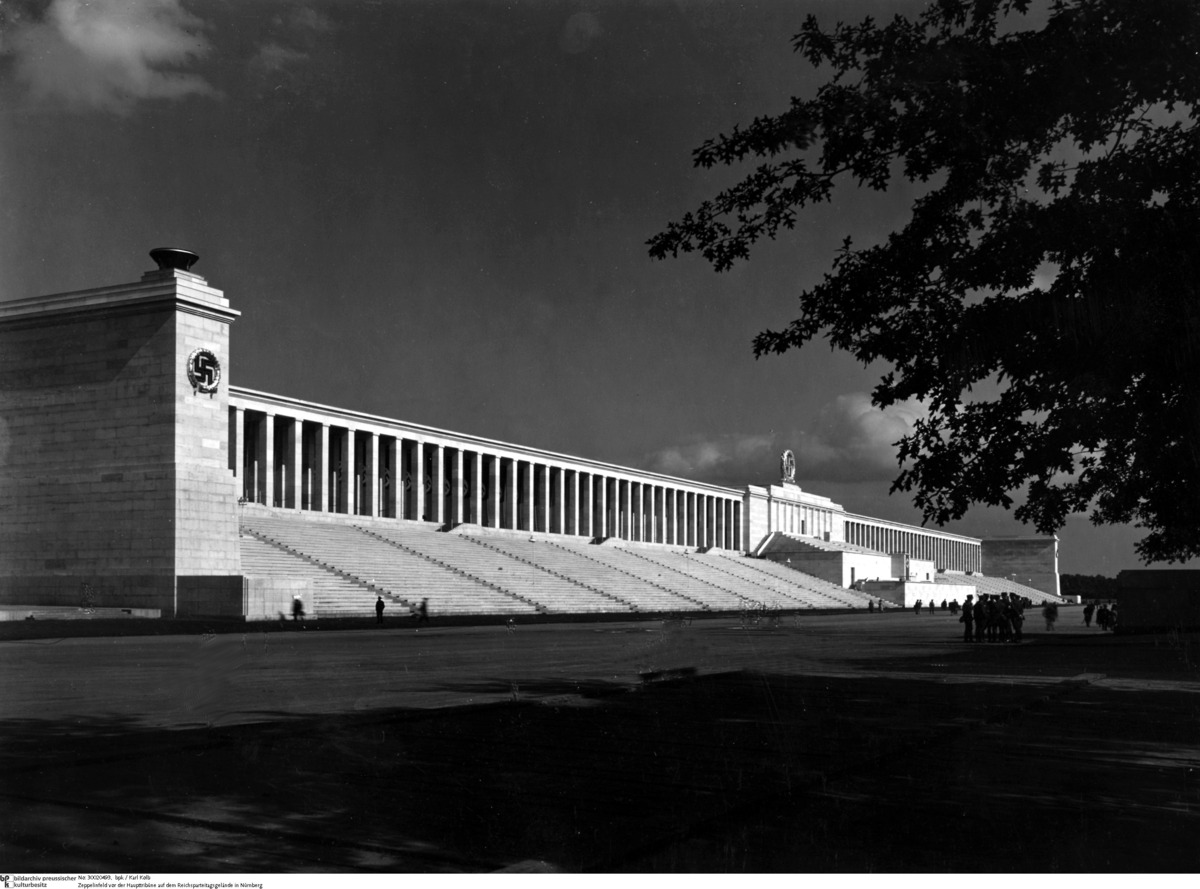Abstract
Hitler dreamt of completely reshaping Germany’s architectural
landscape. For his Thousand-Year Reich, he preferred massive
neo-classical buildings that delivered a message of power, severity, and
stability. As a young man, Hitler had wanted to become an artist himself
but was denied admission to Vienna’s Academy of Fine Arts. After
becoming chancellor, Hitler continued to take a passionate interest in
art and architecture, putting both in the service of his totalitarian
state. This photograph depicts the Zeppelin Grandstand, which occupied
part of the Nazi party congress grounds in Nuremberg. Designed by Albert
Speer and modeled on the Greek Pergamon Altar, it was 360 meters long
and 23 meters high and could hold up to 50,000 spectators. The Zeppelin
Field could hold up to 100,000 people and was used for Nazi mass
propaganda events.
